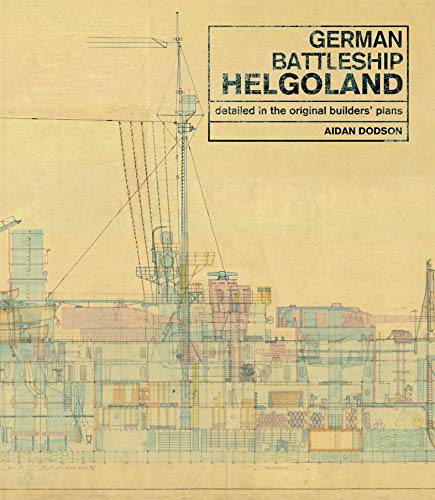Reviewed by CDR Tobias R. Philbin III, PhD, USNR (Ret.)
This is a professionally executed and beautifully produced exposition of the original plans of the second class of German dreadnought, the originals of which now reside in the collections of the UK National Maritime Museum (NMM). As it happens, this reviewer has some familiarity with the remaining collections of the World War I era Naval Inter-Allied Commission of Control (NIACC) which ended up in the NMM. Whilst a graduate student in War Studies at Kings College London, I sought assistance from Rear Admiral Percy Gick, R.N. (ret) in locating the NIACC collection, as previous inquiries in the German archives indicated the Reich Marine Amt (Imperial Navy Office) file copies of ships plans had been destroyed in World War II bombing raids, while many British records in London had suffered the same fate. Because the NIACC records were missing and thought destroyed, it took the intervention of the UK chief of naval construction, on of Gick’s late subordinates to find them and send over 2000 documents to the NMM.
German Battleship Helgoland is part of a series which includes British battleship Warspite, cruiser Birmingham, aircraft carrier Victorious and others still in the works, including battle cruiser Repulse. This series presents definitive analysis of technical history using primary sources. This series promises to be a worth successor to the early 1970s “Warships in Profile” series edited by the late Antony Preston.
Aidan Dodson is a distinguished historian who combines a background the field of German naval history with an interest and major contributions to Egyptology. Helgoland includes the reproduction of all key elements of a constructor’s plan sets including structure, armament, machinery, protection, careers of the class, details of famed German damage control and pumping systems and fire control as well as communications rigs as last fitted. The preproduction plans include highlighted sections which are then translated from the German. The 144-page large format book plans are about 1/200 scale and could easily be used to create a builder’s model. They are in the original full color with notes and translations for key features on each page. There is a short but effective bibliography and a list of all the original plans and references which a researcher could use if visiting the Museum to locate the originals or request them from the museum.
This book is ideal for answering the historical question of ‘what did it actually look like?’ The preservation and publication of such data as these plans contain is critical to understanding many of the basic facts, premises and subsequent analysis of the Kaiser’s High Sea Fleet. The reader can proceed deck by deck down to the keel of the ship, then fore and aft through magazines and torpedo flats and boiler and engine rooms, then back up to berthing spaces and officers’ quarters and ships control and of course the six heavy turrets and the 5.9 inch gun casemates of the secondary armament. The reader can even grasp the complex essentials of the German coaling system, as the rigs are included. The complex damage control arrangements are laid out as well as their attendant piping. One hopes the famous German battlecruisers might receive similar treatment.
German Battleship Helgoland: Detailed in the Original Builder’s Plans (Aidan Dodson, Seaforth Publishing, Haverford, PA, 2019).


